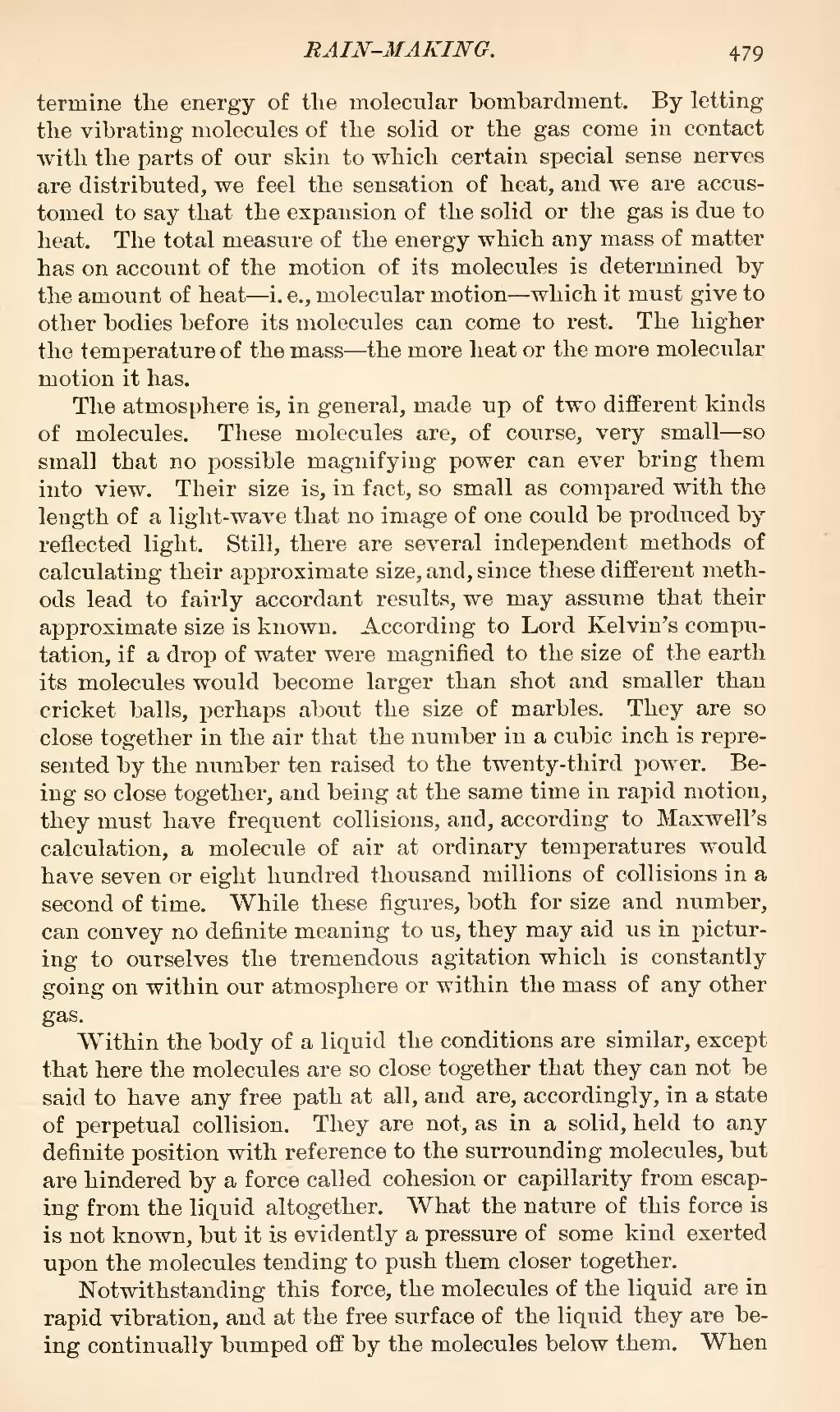termine the energy of the molecular bombardment. By letting the vibrating molecules of the solid or the gas come in contact with the parts of our skin to which certain special sense nerves are distributed, we feel the sensation of heat, and we are accustomed to say that the expansion of the solid or the gas is due to heat. The total measure of the energy which any mass of matter has on account of the motion of its molecules is determined by the amount of heat—i. e., molecular motion—which it must give to other bodies before its molecules can come to rest. The higher the temperature of the mass—the more heat or the more molecular motion it has.
The atmosphere is, in general, made up of two different kinds of molecules. These molecules are, of course, very small—so small that no possible magnifying power can ever bring them into view. Their size is, in fact, so small as compared with the length of a light-wave that no image of one could be produced by reflected light. Still, there are several independent methods of calculating their approximate size, and, since these different methods lead to fairly accordant results, we may assume that their approximate size is known. According to Lord Kelvin's computation, if a drop of water were magnified to the size of the earth its molecules would become larger than shot and smaller than cricket balls, perhaps about the size of marbles. They are so close together in the air that the number in a cubic inch is represented by the number ten raised to the twenty-third power. Being so close together, and being at the same time in rapid motion, they must have frequent collisions, and, according to Maxwell's calculation, a molecule of air at ordinary temperatures would have seven or eight hundred thousand millions of collisions in a second of time. While these figures, both for size and number, can convey no definite meaning to us, they may aid us in picturing to ourselves the tremendous agitation which is constantly going on within our atmosphere or within the mass of any other gas.
Within the body of a liquid the conditions are similar, except that here the molecules are so close together that they can not be said to have any free path at all, and are, accordingly, in a state of perpetual collision. They are not, as in a solid, held to any definite position with reference to the surrounding molecules, but are hindered by a force called cohesion or capillarity from escaping from the liquid altogether. What the nature of this force is is not known, but it is evidently a pressure of some kind exerted upon the molecules tending to push them closer together.
Notwithstanding this force, the molecules of the liquid are in rapid vibration, and at the free surface of the liquid they are being continually bumped off by the molecules below them. When

